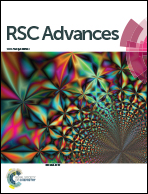Nutrient value of fish manure waste on lactic acid fermentation by Lactobacillus pentosus
Abstract
The aim of this work was to study the feasibility of using fish manure waste as a nutrient source for lactic acid fermentation. Fish waste contains nitrogen and minerals that could support the growth of lactic acid bacteria (LAB), making it a good candidate as the nutrient source for lactic acid fermentation. Two different fish manure wastes, from Nile tilapia and channel catfish aquaculture, were investigated for their performance on different sugar substrates. Both fish waste types showed low efficiency in the direct fermentation of glucose, but satisfactory efficiencies in simultaneous saccharification and fermentation (SSF) of cellulosic materials, such as pure cellulose and paper sludge. The highest lactic acid yield obtained was 87% and 91%, with a corresponding volumetric productivity of 1.006 and 0.580 g L−1 h−1, and corresponding lactic acid concentration of 96 and 56 g L−1 for cellulose and paper sludge, respectively. Fish waste concentrations did not show much impact on lactic acid production for the SSF process, where increasing fish waste from 10 to 30 g L−1 resulted in less than a 10% yield increase. In the present study, fish manure waste was shown to be an effective and economic nutrient source for lactic acid production by SSF.



 Please wait while we load your content...
Please wait while we load your content...